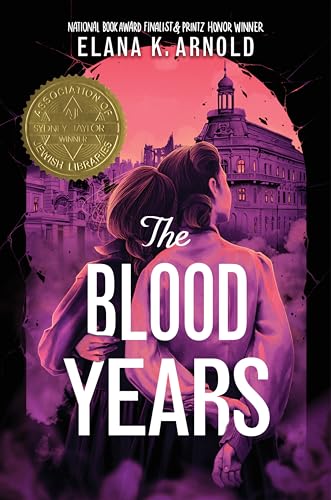The Blood Years
Arnold powerfully honors her grandmother’s experiences in this coming-of-age novel set in Czernowitz, Romania (now Chernivtsi, Ukraine), during World War II. Although 13-year-old Rieke is aware of Romania’s antisemitism before the war, her concerns are more mundane—dance class; her glamorous sister Astra, who is falling in love with a doctor ten years her senior; her mother, who has been depressed ever since the girls’ father left the family for another woman; and being worthy of working in her grandfather’s jewelry business. With Hitler’s initial victories and the Romanian government joining the Axis, local gangs destroy the jewelry shop. When the Soviets march into the city in 1940, antisemitic attacks end, but the communists take all the food for themselves, and Rieke falls ill with tuberculosis. Then comes the Nazi invasion of the Soviet Union, and in the wake of the fleeing Soviets, the real terror begins. Rieke and her family survive through luck, but they witness terrible atrocities and make unspeakable sacrifices to stay alive.
Rieke’s narrative—by necessity more a witness than an actor in those horrific times—conveys day-to-day realities that are both mundane and monumental. Some morally reprehensible individuals, like Astra’s philandering husband, turn out to be heroes, while those who hold onto moral principles often put themselves and their families in danger. Desperate times give readers much to ponder, including how people subjected to these atrocities maintain their humanity and hope. While luck saves Rieke, so does the loyalty of family and friends. Arnold’s extensive author’s note reveals how much of the story actually happened to her grandmother, offers a bibliography for further exploration, and connects what happened in Romania to the rise of hate groups today.










